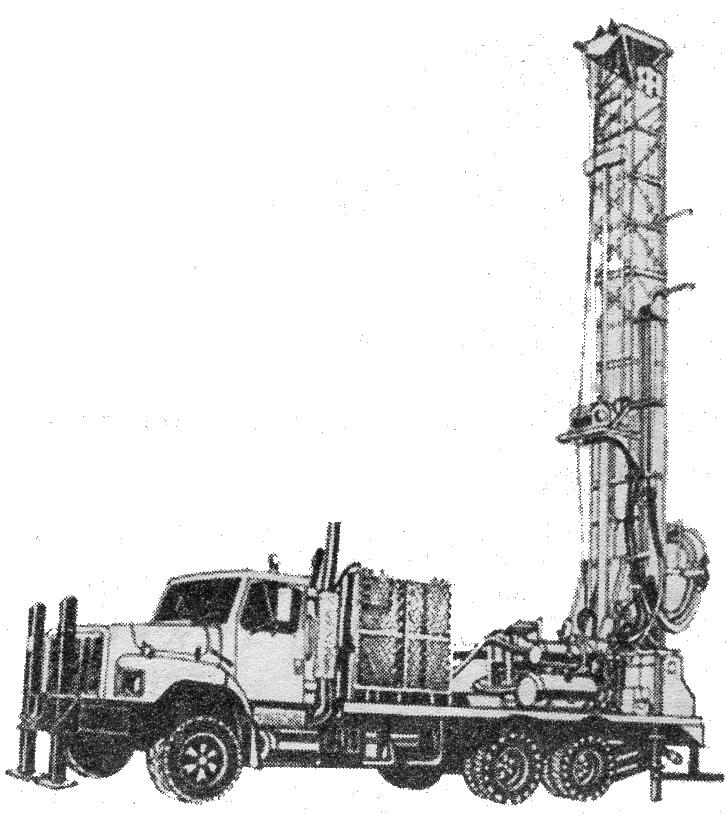
8 minute read
History Of The CCC In Maine Helping people get back to work
History Of The CC In Maine
Helping people get back to work by John Murray W hen President Franklin Delano Roosevelt took office in 1933 the United States was in the midst of the Great Depression. Many were experiencing difficult times, and a staggering number had lost jobs and could not find work. By March of 1933, 13.6 million people in the United States were unemployed.
Advertisement
President Roosevelt knew the challenges that lay before him well before he began his tenure as the leader of the nation. In President Roosevelt’s inaugural address on March 4, 1933, he spoke of the dire need to put people back to work. “Our greatest primary task is to get people back to work. There is no unsolvable problem if we face it wisely and courageously. It can be accomplished in part by direct recruiting of the government itself, treating the task as we would treat the emergency of a war, but at the same time, through this employment, accomplishing greatly needed projects to stimulate and organize the use of our national resources.”
The president did not hesitate to put a plan into motion. Two days after the inauguration, President Roosevelt called an emergency meeting with his government officials. In this meeting, he informed the government staff as to what he intended to do. As a component of what he called the New Deal, President Roosevelt would immediately put a half million young men to work in the newly created CCC, which was the Civilian Conservation Corps. These young men would work in the wilderness, forests and lands throughout the country, and their primary focus was to restore and conserve the legacy of the national lands.
On April 5, 1933, the Civilian Conservation Corps was established by Congress, and would have a presence in every state of the nation. Shortly thereafter, Maine was informed on April 27, 1933 that the CCC would establish multiple needed camps in the state for extensive long-term projects. The CCC was formulated on a military model, and would be administered and (cont. on page 6)
Free Statewide Delivery 30 Day Satisfaction Guarantee 1031 Main Rd. (Rte. 1A) • Holden, Maine 207-843-7301 dorseyfurniture.com
Daniel L. Steinke, D.D.S. Hillary S. Caruso, D.M.D.

We emphasize comprehensive preventive care in a comfortable, caring environment. Quality Orthodontics, Relaxation Dentistry, Root Canal Therapy, Gum Disease Treatment, Oral Surgery and Implant, and other specialties right in our office. ~ 24 Hour Emergency Care For Our Patients! ~ 422-3770 • 8 Main St., Sorrento • 564-3455 • 5 Winter St., Dover-Foxcroft Comprehensive Dentistry CENTRALMAINESMILES.COM
SWETT’S TIRE & AUTO Since 1966 Full Service Auto Repair Computer Diagnostic Bridgestone/Firestone Michelin/Goodyear Tires 451 Hogan Road, Bangor • 942-7678 538 State Street, Bangor • 307-7575 swettstire.com
West’s Coastal Connection
• Calais • Machias • Bangor • Ellsworth
Celebrating Over 30 Years in Business
run by the United States Army. A training facility was set up at Fort Williams in Cape Elizabeth, and recruitment quickly began at the newly formed recruiting office in Bangor.
Initial manpower for work projects in Maine would total 1,800 men. Recruitment was based upon the criteria that the candidates had to be unemployed men in good psychical condition, and be between the ages of 18 – 24 years. Boot camp training would last for many weeks at Fort Williams, and its purpose was increasing the physical stamina of the young men, plus instilling the importance of functioning as a team. When boot camp training was completed, the young men would be assigned to work camp locations in the state. Depending on the work camp, an assignment would last for a minimum of six months, or perhaps a maximum of two years.
The CCC would provide clothing, (cont. from page 5)
lodging and meals for the workers. Wages for a worker were 30 dollars a month, and was slightly higher for men that were chosen for supervisory duties. It was mandatory that $25 dollars a month would be sent home to the families of the camp workers, and the workers were allowed to keep $5 a month for themselves.
The program was fully functional with trained men by July 1933, and 14 work camps were initially established throughout the state. With the success of the program in Maine, a total of 19 work camps would be established by November of 1935, and the total camp work force in Maine would be increased to 3,425 men. That same year the age requirement was modified, and men that were between 18 - 29 years old could now be selected for the program. In the following years, more work camps were established throughout Maine, until the number of work camps reached 28. With vast sections of forested land in Penobscot, Piscataquis, and Hancock counties, a total of 8 CCC work camps would be built in these three counties. The township locations of these camps were Bar Harbor, Southwest Harbor, Patten, Greenfield, Millnocket, Ellsworth, Beddington, and Kokadjo.
Even though the CCC was administered by the United States Army, the overseeing supervisory service in Maine was undertaken by the United States National Park Service, or the Maine Forest Service. Work duties varied depending on the overseeing supervisory service agency. The National Park Service focused on forest culture. This included planting trees and combating erosion. Along with that, roads and trails were constructed for the recreational use of the general public. The Maine Forest Service focused on forest fire protection. Flammable brush was
Lori Whitten President

WILLIAMS & TAPLIN Water Wells Complete Water Systems Installed
Service Installation Repairs

Commercial & Residential
Maine Equipment Company
Dump Bodies • Hoists Service Bodies • Rubbish Packers Lift Gates • Wet Systems • Sanders 848-5738 1-800-244-5738 Distributor for: Heil, Tommygate, Beau-Roc, Th ieman, Reading, Commercial, Chelsea, Wastequip, Galbreath, Pioneer and Downeaster
2011 Hammond St. (U.S. Route 2) Hermon
Lsumner@mainequipmentco.com maineequipmentco.com
House & Building Mover LECLAIR CONSTRUCTION
All Types of Well Drilling
Call Mark Taplin 374-5447 Blue Hill, Maine
659-3878 Old Town Excavation Work Foundations Site Work • Rigging Free Estimates Fully Insured
cleared, and fire breaks were constructed in regions that were prone to forest fires. In addition to fire protection, roads and trails were constructed and maintained in the wilderness areas.
Work days were highly regimented, and closely resembled the military model. Men lived and slept in large barracks, and the work days were grueling and long. A typical day would begin at 5:30am, and a hearty breakfast was served in the mess hall. Men and required work gear were loaded on trucks, and driven to the work site. A midday lunch break was taken at the work site, and work would continue throughout the remainder of the day. Depending on the season and the availability of daylight, a typical work day averaged 12 hours a day. At the end of the work day, men and gear were back on the trucks and would head back to the work camps for dinner. When at the work camp, men stayed in the barracks in the camp compound. Remote work sites that were a distance from the work camp would require living in makeshift camps until the project was completed. When CCC work projects were in full swing in the United States, the CCC nationally employed a half million young men during the year. During the nine years that the CCC was run, the program provided jobs for 3 million men until the onset of WWII. In the nine years of its existence, the men of the nationwide CCC planted 3 billion trees, stocked rivers, streams and lakes with nearly 1 billion fish, built and maintained hundreds of miles of roads and trails, suppressed forest fires, fought harmful insect pests in the forests, and constructed 800 state parks throughout the nation. For Maine, the CCC provided well needed employment to a total of 16,686 resident recruits, plus another 1,136 jobs to non-resident recruits that came to
TRI CITY PIZZA ~ Since 1962 ~ Fresh Dough Pizza Italian Sandwiches Beer To Go Open 7 Days
422 Center Street, Bangor (Corner of Broadway & Center Streets)
942-2943/2933

Now purchasing Stumpage & Land Managing Forests in Maine since 1991
LAW OFFICE OF CHARLES W. HODSDON II www.hodsdonlaw.com • Divorce & Family Law • Business & Incorporation • Power of Attorney • Adoption • Insurance Law • Real Estate Buying, Selling, Title Insurance, Closing • Criminal & Civil Trials • LLCs & Partnerships • Wills & Estates • Guardianships • Personal Injury 319 Union Street Bangor, Maine 207.945.3355

Answering Your Questions Since 1984 Maine for work opportunities. In addition to those employment numbers, 1,612 supervisors and technical support staff were employed by the CCC in Maine.
With the involvement of the United States in WWII, The U.S. Military recognized the regimented military style training of the men that comprised the work force of the CCC, and these men became prime candidates for military service. With the job crisis over at that point in time, the nation now had a new crisis to be concerned about. CCC camps throughout Maine rapidly shut down during this era, and the last CCC camp to close in the region was the Bar Harbor work camp during June 1942. There aren’t many surviving Maine residents that remember the existence of the CCC work camps, but the lasting legacy of the work performed by the CCC is still evident today.
*Other businesses from this area are featured in the color section.

• Breakfast • Pastries • Soups & Salads • A TERRIFIC SELECTION of Bagels • Deli Sandwiches









